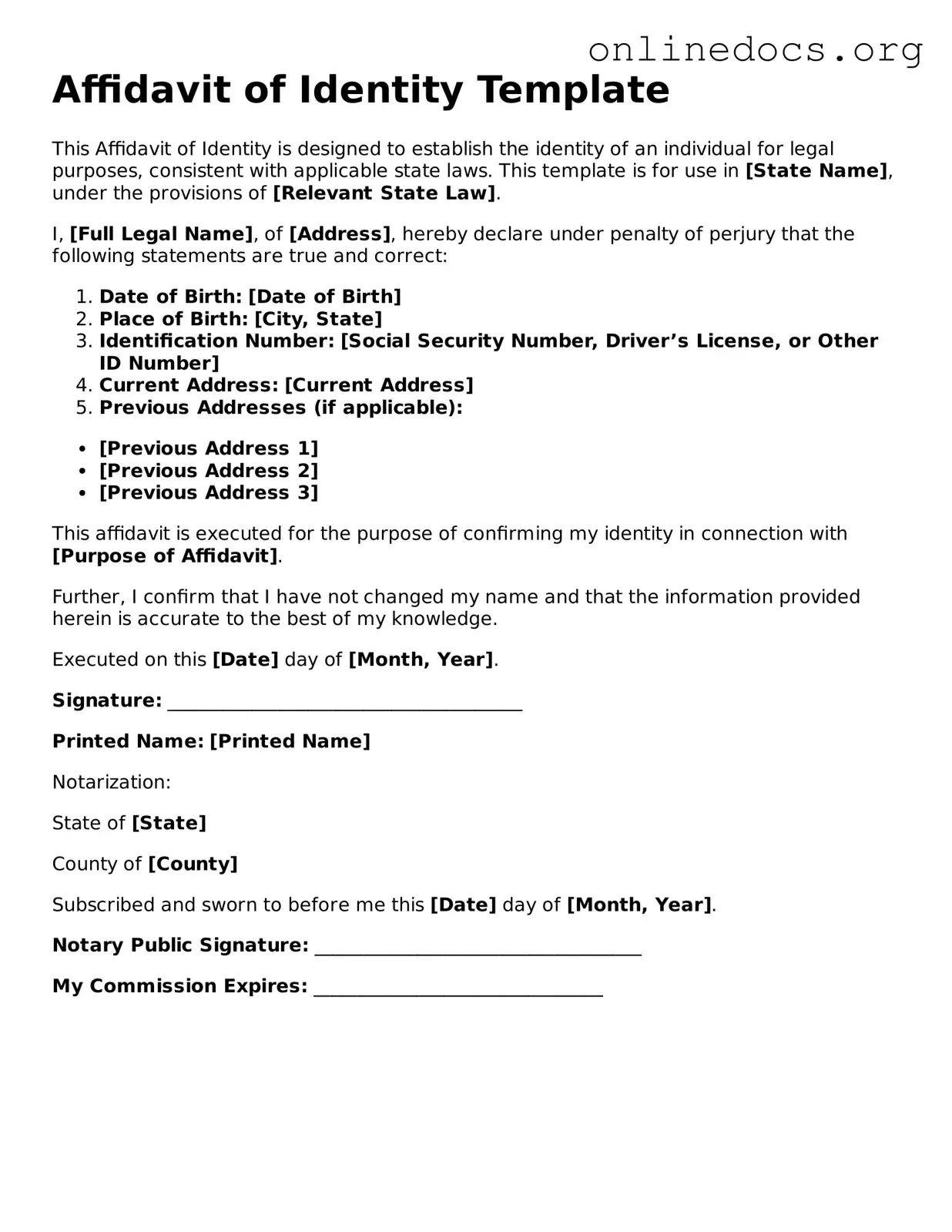The Affidavit of Identity form is similar to a Declaration of Identity. Both documents serve to confirm an individual's identity, often in situations where official identification may not be available. A Declaration of Identity typically includes personal details such as name, address, and date of birth, and is often used in legal proceedings or to support applications where proof of identity is required.
Another document akin to the Affidavit of Identity is the Identity Verification Form. This form is commonly used by financial institutions and other organizations to verify a person's identity. It usually requires the submission of personal information and may also ask for supporting documents, similar to the Affidavit of Identity, which affirms the accuracy of the information provided.
The Statement of Identity is yet another document that shares similarities with the Affidavit of Identity. This statement is often utilized in legal contexts to assert one’s identity for various purposes, such as court cases or administrative matters. Like the Affidavit, it typically requires a sworn statement and may be notarized to ensure its authenticity.
For those navigating the residency process, an essential resource is the comprehensive Affidavit Letter of Support for I-751, which provides personal endorsements to strengthen your petition and support your case effectively.
A Certificate of Identity is also comparable to the Affidavit of Identity. This document is often issued by governmental agencies to confirm a person's identity, especially for individuals who may not have traditional identification. It serves as an official recognition of identity, much like the affidavit, but is usually more formal and recognized by various institutions.
The Identity Affidavit is another related document. This affidavit serves to declare a person’s identity under oath, often in situations involving legal disputes or immigration matters. It requires the individual to provide personal information and affirm its truthfulness, much like the Affidavit of Identity.
The Personal Identification Affidavit is also similar. This document is used to declare one’s identity in a legal context, often requiring a witness or notary. It serves the same purpose as the Affidavit of Identity, providing a sworn statement that can be used in legal proceedings.
The Verification of Identity form is another document that functions similarly. This form is typically used in various applications, such as for employment or legal matters, to verify an individual’s identity. It requires personal information and may be accompanied by identification documents, paralleling the requirements of the Affidavit of Identity.
The Identity Confirmation Form can also be considered similar. This form is often used by organizations to confirm an individual's identity for various purposes. It requires personal information and may necessitate additional documentation, similar to the Affidavit of Identity, to substantiate the claims made within it.
Finally, the Proof of Identity form shares characteristics with the Affidavit of Identity. This document is often required by institutions to verify a person's identity, especially when applying for services or benefits. It typically involves providing personal details and may require supporting documents, much like the affidavit.
